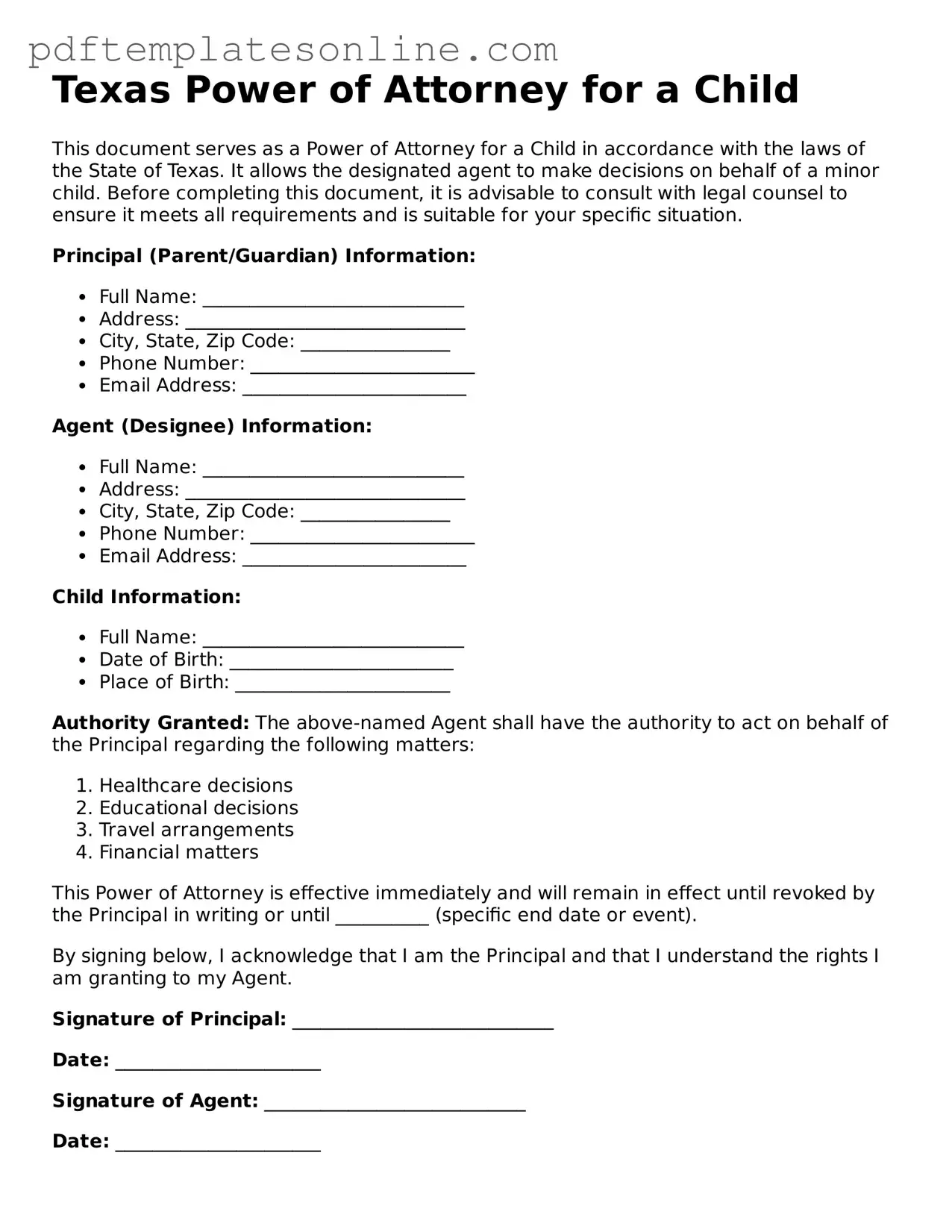Filling out the Texas Power of Attorney for a Child form can be a straightforward process, but several common mistakes can lead to complications. One frequent error is not clearly identifying the child involved. It is essential to provide the child's full name, date of birth, and any other identifying information. Omitting this information may create confusion about who the document pertains to.
Another mistake is failing to specify the powers granted to the agent. The form allows you to outline what decisions the agent can make on behalf of the child. If this section is left vague or incomplete, the agent may not have the authority to act in situations where their help is needed. Clearly detailing these powers ensures that the agent knows their responsibilities and limits.
Some individuals overlook the importance of including the duration of the power of attorney. It is crucial to state how long the authority will last. Without a defined timeframe, the document may be considered valid indefinitely, which could lead to unintended consequences. Setting a specific end date or conditions for termination helps clarify the arrangement.
Additionally, many people forget to sign and date the form. A signature is a critical component of any legal document. Without it, the power of attorney may not be recognized, rendering the entire document ineffective. Always ensure that all necessary parties sign the form in the appropriate places.
Not having the document notarized can also be a significant oversight. In Texas, notarization is often required to validate the Power of Attorney for a Child. Without a notary's signature, the document may face challenges in proving its authenticity. This step is essential for ensuring that the form is legally binding.
Another common mistake is neglecting to inform the child about the arrangement. While it may seem unnecessary, keeping the child informed can help them understand the situation and the role of the agent. This communication fosters trust and can alleviate any potential anxiety the child might feel about the changes.
Lastly, failing to keep copies of the completed form can create issues down the line. It is vital to retain copies for both the agent and the parents. This way, everyone involved has access to the document if questions arise or if the need for the power of attorney becomes urgent. Maintaining clear records can prevent misunderstandings and ensure that the arrangement is respected.
